Ph Water Scale
There is a large variety of choices of drinking water in the market today, from spring water to Ph Water. Many of these waters are marketed to us in bottles with some unrealistic claims. However, all waters originate similarly from lakes, river reservoirs, underground aquifer and wells. What differentiates them from each other is defined by its content which gives it its taste and benefits. Water gets its content by its journey through the earth, absorbing minerals and dissolved solids of miscellaneous content within its path. Unfortunately, water is not as clean as it used to be because we have polluted our water paths and environment with waste and chemicals from industrial and commercial by-products.

Tap Water
Tap water comes to us from regional and local lakes, river reservoirs,underground aquifer and wells absorbing impurities and inorganic contents from the surroundings, usually populated environment. This water is then gathered and processed at a water treatment plant where many chemicals are added in the attempt to clean the pollution, kill bacterias and neutralize the acidic pH. After this chemical treatment process, it is routed though miles of pipes until it eventually comes out of your faucet as tap water. (1)Tap water contains large quantities of inorganic minerals which are not readily absorbable by the body. According to Dr.Norman Walker, over a 70-year lifespan, a person will be drinking about 200 to 300 pounds of rock that our body cannot use. Most will be eliminated, but some stays in the body, causing gallstones, kidney stones, and hardening and blockages in the arteries. In addition, tap water can normally contain many cancer and disease causing chemicals (3) such as Chlorine, Lye, Arsenic, Asbestos, Aluminum, Benzene, Mercury, Toluene, Herbicides, Pesticides, Endrine, Chloride, Fluoride, Cadmium, Chromium, Copper, Lead, Nickel, Nitrate, Radium, Radon, pharmaceutical drugs and animal feces. (2) See pharmaceutical meds in our drinking water news articles.
 Filters
Filters
Since it is understood that tap water is not clean water, we attempt to clean it up with home filters such as pitchers, faucet mounts and countertops and other active carbon-based filters. However, these filters are extremely limited because they only work against a few chemicals such as chlorine and solid impurities. Their filtration media is specifically targeted to a few impurities allowing the majority of pollutants through. Active carbon will minimize the smell and bad taste of chlorine. However, it is not much good against the majority of the chemicals and impurities. The fact is you are still drinking inorganic minerals and chemicals depending on your source water’s journey.
 Distilled Water
Distilled Water
Distilled Water is usually tap water that had all of its content removed through boiling or distillation. Distilled water is extremely empty and aggressive. Since the nature of water is to have content, it immediately absorbs carbon dioxide from the air making it very acidic. Studies have consistently shown that heavy consumers of distilled water combined with a poor diet spill huge amounts of calcium, magnesium and other trace minerals into the urine because this water demineralizes you. The more mineral loss, the greater the risk for osteoporosis, osteoarthritis, hypothyroidism, coronary artery disease, high blood pressure and a long list of regenerative diseases generally associated with premature aging.
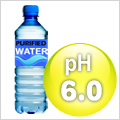 Purified Water
Purified Water
Purified Water is similar to distilled water and is the most common bottled water or drinking water from a home or office filtration system. This type of drinking water normally start out as municipal source tap water which is further treated with many types of filtration processes such as reverse osmosis. Basically, this means that the water has been filtered, cleaned and stripped away of all its content making it “purified”. Purified water must contain no more than 10 ppm of (TDS) total dissolved solids. However, when you strip water of all its minerals, it becomes empty, acidic, aggressive and absorbent. This is a problem because purified, empty water will leach just about everything in its path including minerals from your body, co2 from the air, metals from the pipes and plastic from bottles. Drinking purified water for a long period of time tends to deplete your body from its much needed alkaline minerals. Especially if you don’t replace those minerals by eating mineral rich foods like fruits and veggies.[/block]
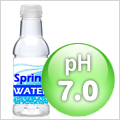 Spring Water
Spring Water
Spring Water originates from underground aquifers that are naturally forced onto the surface forming a spring. The water will absorb dissolved solids and organic or inorganic minerals in its path. Depending on the waters long travel path and the location where it is gathered will determine the quality of minerals and/or impurities that may be present. Human population is constantly growing and hidden natural springs are few and disappearing. Industrial and commercial by-products and waste are everywhere. Spring bottled water brands can occasionally be bottled with environmental pollutants depending on their geographical and geological location to near by industrial activity. The pH balance of spring water is commonly neutral depending on its mineral types and content.
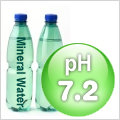 Mineral Water
Mineral Water
Mineral Water is similar to spring water with a higher mineral content. This water must contain at least 250 parts per million total dissolved solids (TDS) or trace elements, and must come from a source tapped at one or more bore holes or springs. However, the TDS may be composed of good minerals and other not so good dissolved solids depending on the travel path and location of gathering to nearby industrial or commercial activity. Mineral water commonly has a neutral to slightly alkaline pH balance depending on the types of minerals entrained.
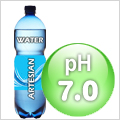 Artesian Water
Artesian Water
Artesian Water comes from a well that taps a confined aquifer (a water-bearing underground layer of rock or sand) in which the water level is above the top of the aquifer. Artesian water well can be subject to environmental pollutant depending on their geographical location to nearby industrial and commercial activity. This water commonly has a neutral pH balance depending on the type of mineral content.
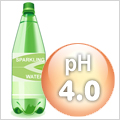 Sparkling Water
Sparkling Water
This type of water contains the same amount of carbon dioxide that it had when it emerged from its source. Sparkling bottled waters may be labeled as sparkling drinking water, sparkling mineral water, sparkling spring water, etc. The quality of this water can be subject to environmental pollutants depending on their geographical location to nearby industrial and commercial activity. This water is acidic by nature because of the carbon dioxide it contains. It usually has an acidic pH of 4.0.
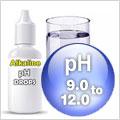 Alkaline Concentrate Drops
Alkaline Concentrate Drops
There are a variety of brands in the market of pH concentrate drops that you put in your water and beverages in order to raise the pH and lower the (ORP). Many of these products make health claims that are not accurate. Most alkaline solution drops are made with inorganic ingredients and chemicals specifically designed to raise pH of liquids and lower ORP temporarily. Raising the pH of your water does not necessarily give you any health benefits. Raising pH artificially can be accomplished in many ways including adding baking soda to your water to make it ph water. Artificial ingredients are not 100% absorbed by our body. Our bodies need essential natural, ionic and organic minerals from foods in order to create its own alkaline buffers. The pH range of these drops average from pH 9 to 12.
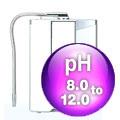 Electrical Alkaline Water Ionizer
Electrical Alkaline Water Ionizer
Electrical Alkaline Water Ionizer convey to alleviate many illnesses. Thousands of folks swear its effectiveness for better health and it makes sense because it helps minimize over acidity. Unfortunately, much information on the Internet from many dubious sources pollutes its credibility with several exaggerated unsubstantiated health claims that are easily debunked by the science community. According to several online articles, these machine were originally used under the supervision of medical doctors in Japan and Korea under controlled dosage. However, in the past decade this electrical apparatus became freely available to the public with no medical supervision. Another concern is that these Alkaline ph water ionizers use poorly filtered tap water as the source water which runs through a small limited pre-filter that only protects you from a few pollutants. The rest of the inorganic hard minerals and miscellaneous content has to be present to sustain high TDS. This is necessary to create the electrolysis process that makes the claimed benefits to exist. Furthermore, the high alkalinity and negative ORP properties do not last long and fades away back to regular poorly filtered tap water within minutes once exposed to oxygen. Moreover, inorganic minerals from tap water are not easily absorb by the body and over time can accumulate internally causing kidney stones and gallstones. Additionally, the upfront pricing of these machines are a bit steep ranging from $1,000 to $4,300 plus the maintenance cost of buying new filters periodically.
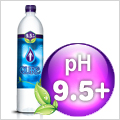 QURE WATER
QURE WATER
QURE ALKALINE WATER is not from a secluded mountain of healing springs somewhere in a mystical valley far, far away. The base source is municipal drinking water meticulously purified pristine clean and enhanced with our 9 stage proprietary QURATION™ mineralization technology. Our mixed combination of advanced purification process removes impurities in the ph water to a TDS of 5. This water is free of chemicals, medicines and pollution. Once our base water is pristine purified, it goes though a second process where it is infused with a proprietary blend of the highest quality ionic absorbance of alkaline minerals. Additionally, our proprietary fusion blend of minerals to ph water ratio gives QURE a distinguished smooth silky taste that makes drinking water a pleasurable experience. See What is QURE WATER? for more details.
